
Kevin Wayne Jeter is an American science fiction and horror author known for his literary writing style, dark themes, and paranoid, unsympathetic characters. He has written novels set in the Star Trek and Star Wars universes, and has written three sequels to Blade Runner. Jeter also gained recognition for coining the term "steampunks".

Philip Kindred Dick, often referred to by his initials PKD, was an American science fiction writer. He wrote 44 novels and about 121 short stories, most of which appeared in science fiction magazines during his lifetime. His fiction explored varied philosophical and social questions such as the nature of reality, perception, human nature, and identity, and commonly featured characters struggling against elements such as alternate realities, illusory environments, monopolistic corporations, drug abuse, authoritarian governments, and altered states of consciousness.
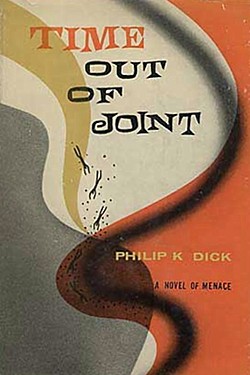
Time Out of Joint is a dystopian novel by American writer Philip K. Dick, first published in novel form in the United States in 1959. An abridged version was also serialised in the British science fiction magazine New Worlds Science Fiction in several installments from December 1959 to February 1960.

Paul J. McAuley is a British botanist and science fiction author. A biologist by training, McAuley writes mostly hard science fiction. His novels dealing with themes such as biotechnology, alternative history/alternative reality, and space travel.
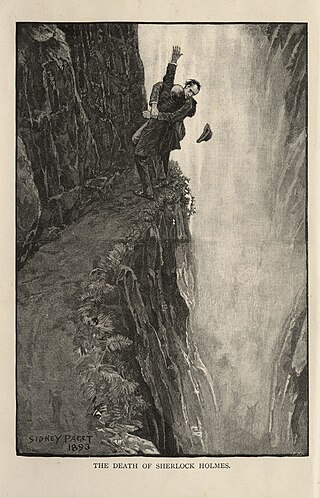
Retroactive continuity, or retcon for short, is a literary device in which facts in the world of a fictional work which have been established through the narrative itself are adjusted, ignored, supplemented, or contradicted by a subsequently published work which recontextualizes or breaks continuity with the former.

Arthur Philip Dent is a fictional character and the hapless protagonist of the comic science fiction series The Hitchhiker's Guide to the Galaxy by Douglas Adams.
A parallel universe, also known as an alternate universe, parallel world, parallel dimension, or alternate reality, is a hypothetical self-contained plane of existence, co-existing with one's own. The sum of all potential parallel universes that constitute reality is often called a "multiverse". While the six terms are generally synonymous and can be used interchangeably in most cases, there is sometimes an additional connotation implied with the term "alternate universe/reality" that implies that the reality is a variant of our own, with some overlap with the similarly named alternate history.

The Restaurant at the End of the Universe is the second book in the Hitchhiker's Guide to the Galaxy comedy science fiction "trilogy" by Douglas Adams, and is a sequel. It was originally published by Pan Books as a paperback in 1980. The book was inspired by the song "Grand Hotel" by British rock band Procol Harum. The book title refers to Milliways, the Restaurant at the End of the Universe, one of the settings of the book. Elements of it are adapted from the radio series, primarily the Secondary Phase, although Milliways itself, Arthur and Ford's final fate come from Fits the Fifth and Sixth of the Primary Phase.

The Hitchhiker's Guide to the Galaxy is the first book in the Hitchhiker's Guide to the Galaxy comedy science fiction "trilogy of five books" by Douglas Adams, with a sixth book written by Eoin Colfer. The novel is an adaptation of the first four parts of Adams's radio series of the same name, centering on the adventures of the only man to survive the destruction of Earth; while roaming outer space, he comes to learn the truth behind Earth's existence. The novel was first published in London on 12 October 1979. It sold 250,000 copies in the first three months.

The Virgin New Adventures are a series of novels from Virgin Publishing based on the British science-fiction television series Doctor Who. They continued the story of the Doctor from the point at which the television programme went into hiatus from television in 1989.
The conspiracy thriller is a subgenre of thriller fiction. The protagonists of conspiracy thrillers are often journalists or amateur investigators who find themselves pulling on a small thread which unravels a vast conspiracy that ultimately goes "all the way to the top." The complexities of historical fact are recast as a morality play in which bad people cause bad events, and good people identify and defeat them. Conspiracies are often played out as "man-in-peril" stories, or yield quest narratives similar to those found in whodunits and detective stories.
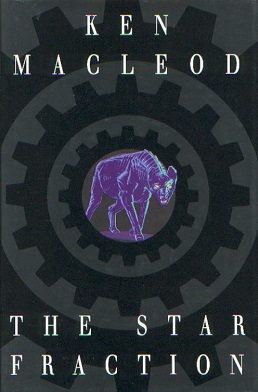
The Star Fraction is a science fiction novel by Scottish writer Ken MacLeod, his first, published in 1995. The major themes are radical political thinking, a functional anarchist microstate, oppression, and revolution. The action takes place in a balkanized UK, about halfway into the 21st century. The novel was nominated for the Arthur C. Clarke Award in 1996.
Paranoid fiction is a term sometimes used to describe works of literature that explore the subjective nature of reality and how it can be manipulated by forces in power. These forces can be external, such as a totalitarian government, or they can be internal, such as a character's mental illness or refusal to accept the harshness of the world they are in.
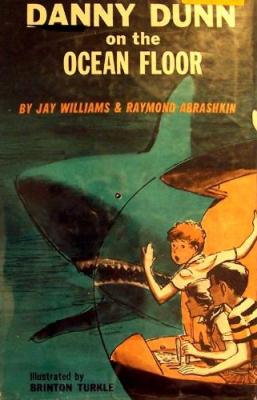
Danny Dunn on the Ocean Floor is the fifth novel in the Danny Dunn series of juvenile science fiction/adventure books written by Raymond Abrashkin and Jay Williams. The book was first published in 1960.
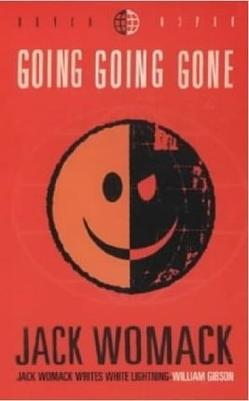
Going, Going, Gone is a 2000 alternate history novel by American writer Jack Womack. As the sixth and final installment of his acclaimed Dryco series, the novel was the subject of much anticipation and speculation prior to its release, and was critically well received.
The following is a list of works by Arthur C. Clarke.

Two Complete Science-Adventure Books was an American pulp science fiction magazine, published by Fiction House, which lasted for eleven issues between 1950 and 1954 as a companion to Planet Stories. Each issue carried two novels or long novellas. It was initially intended to carry only reprints, but soon began to publish original stories. Contributors included Isaac Asimov, Robert A. Heinlein, Arthur C. Clarke, Poul Anderson, John Brunner, and James Blish. The magazine folded in 1954, almost at the end of the pulp era.
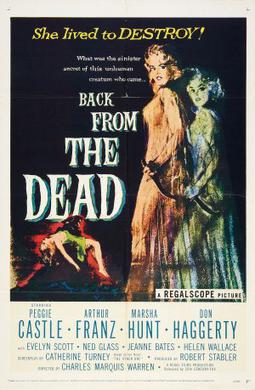
Back from the Dead is a black and white 1957 American horror film produced by Robert Stabler and directed by Charles Marquis Warren for Regal Films. The film stars Peggie Castle, Arthur Franz, Marsha Hunt and Don Haggerty. The narrative concerns a young woman who, under the influence of a devil cult, is possessed by the spirit of her husband's first wife, who had died six years earlier. The screenplay was written by Catherine Turney from her novel The Other One. The film was released theatrically on August 12, 1957, by 20th Century Fox on a double bill with The Unknown Terror.
Hector Hawton was a British humanist, novelist and rationalist writer.














